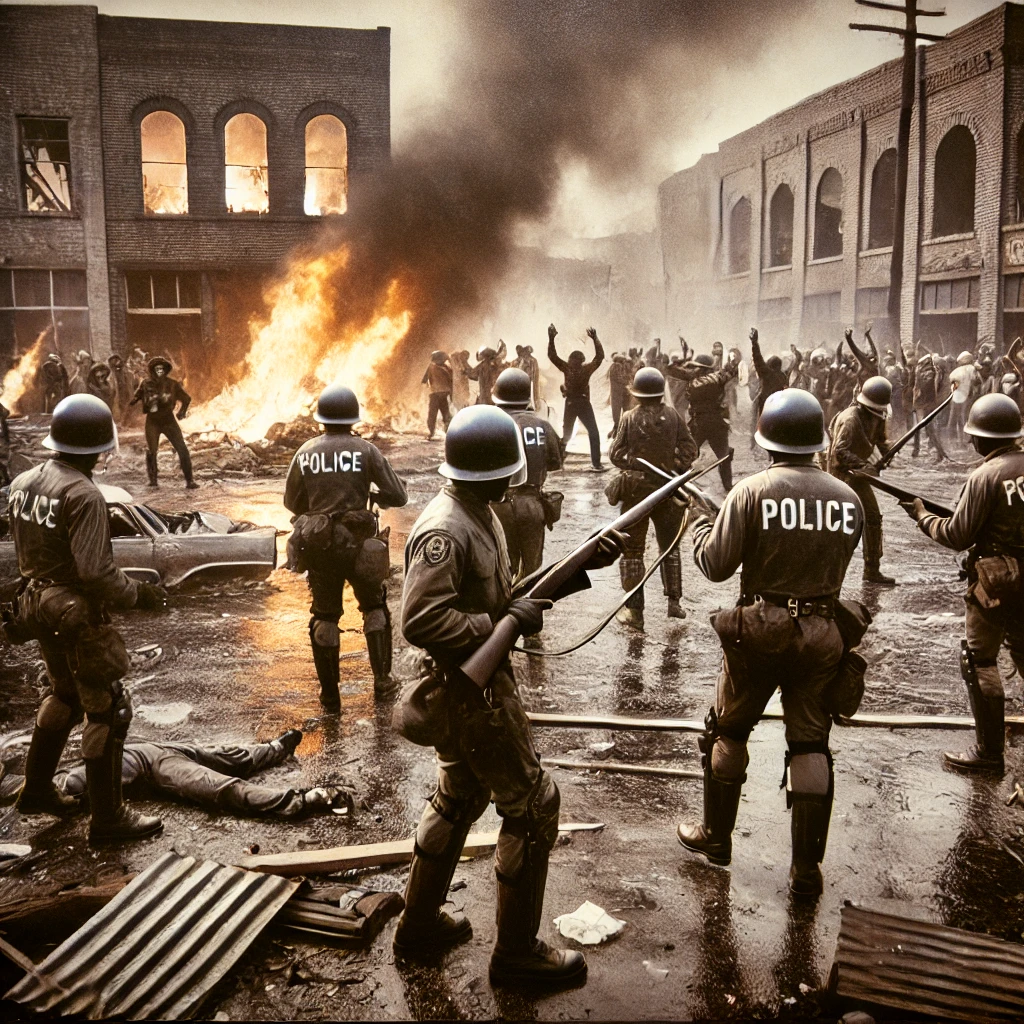On August 11, 1965, the Watts Rebellion, also known as the Watts Riots, erupted in the Watts neighborhood of Los Angeles, California. The unrest began after an incident involving the arrest of an African American motorist, Marquette Frye, who was stopped by police for suspected drunk driving. The situation quickly escalated as tensions between the local community and law enforcement, fueled by longstanding issues of racial inequality and police brutality, boiled over.
The Watts neighborhood, which was predominantly African American, had been experiencing growing social and economic discontent. High unemployment rates, poor living conditions, and systemic racial discrimination had created a volatile environment. The immediate cause of the rebellion was the perceived excessive use of force by police officers during Frye’s arrest, which sparked outrage and led to widespread rioting and civil unrest in the area.

The Course of the Rebellion
The Watts Rebellion lasted for six days, from August 11 to August 17, 1965. During this period, the violence spread rapidly throughout the Watts neighborhood and neighboring areas. The unrest was characterized by looting, arson, and clashes between residents and police. The National Guard was eventually deployed to restore order, and a curfew was imposed to control the situation.
The rebellion resulted in significant damage to property and infrastructure. Over 30,000 people were involved in the unrest, leading to 34 deaths, more than 1,000 injuries, and extensive property damage. The financial cost of the damage was estimated to be in the millions of dollars. The Watts Rebellion highlighted the severe socio-economic issues facing African American communities and drew national attention to the broader struggles for civil rights and social justice.

The Aftermath and Impact
The Watts Rebellion had a profound impact on both the local community and the broader national landscape. In the aftermath, there was an increased focus on addressing the underlying issues that had contributed to the unrest, including poverty, unemployment, and racial discrimination. The rebellion catalyzed discussions about police practices and the need for reforms to improve relations between law enforcement and marginalized communities.
In response to the rebellion, various programs and initiatives were launched to address the socio-economic challenges faced by African American communities. The federal government and local authorities sought to implement measures aimed at reducing racial inequality and improving living conditions. The Watts Rebellion remains a significant historical event, serving as a stark reminder of the deep-seated issues of racial and economic injustice that continue to resonate in contemporary discussions about civil rights and social equity.

The Watts Rebellion, which began on August 11, 1965, was a pivotal moment in American history, reflecting the intense struggles for civil rights and social justice. The events in Watts drew national attention to the pressing issues of racial inequality and police brutality, leading to a broader dialogue about the need for systemic change. The rebellion’s legacy underscores the ongoing challenges faced by marginalized communities and the enduring need for meaningful reforms to address social and economic disparities.
